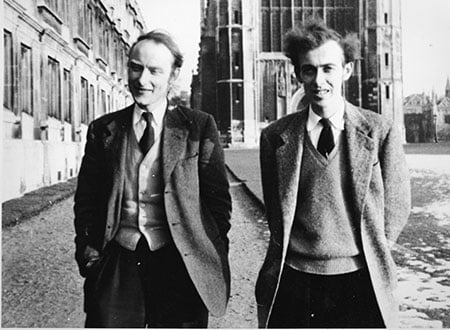How Rosalind Franklin Was Spliced Out of Science Glory
The controversial heart of Rosalind Franklin's story pulsates around “Photograph 51,” the iconic image capturing the elusive double helix structure of DNA. Unbeknownst to her, colleagues James Watson and Francis Crick covertly used this groundbreaking photograph as their blueprint.

In the annals of scientific discovery, Rosalind Franklin remains an unsung heroine. Born in 1920 into an upper-class Jewish family in London, Franklin exhibited a passion for science from a young age. She went on to study natural sciences at the prestigious Cambridge University, completing her PhD on the combustion of coals—a testament to her early scientific prowess. However, it was her later work on the structure of DNA that would secure her a place in the scientific pantheon, albeit posthumously and without the recognition she so deeply deserved.
Franklin's career trajectory took a significant turn in 1950 when she received a fellowship to conduct research at King's College London. But navigating academia in the early 1950s was a precarious endeavor for women. Despite her impeccable qualifications and dedication, Franklin faced blatant gender discrimination. The instance of her being denied access to the faculty lounge for a cup of coffee seems innocuous enough, but it underscores the daily humiliations she faced in a male-dominated field. When Franklin dared to object to these disparities, she was dismissively labeled as a “feminist” who focused on “trivialities”—a narrative that served to sideline and diminish her contributions.
However, what many overlook is that Franklin was entrusted with a significant project at King's College: John Randall, the principal, had assigned her the critical task of investigating the structure of deoxyribonucleic acid, or DNA. Utilizing her skills in X-ray crystallography, Franklin meticulously captured the now-iconic “Photograph 51,” which revealed the double helix structure of DNA. It was a milestone, a quantum leap in the annals of biology and genetics.

A Nobel Prize Sans Credit
The controversial aspect of Franklin's work arises with the entry of James Watson and Francis Crick, her colleagues at the time. The duo used Franklin's “Photograph 51” as the foundation for constructing their three-dimensional model of DNA. However, they did this without Franklin's permission or knowledge, eventually publishing their groundbreaking paper in the scientific journal Nature. A decade later, Watson and Crick were honored with the Nobel Prize in Medicine for the discovery of the DNA structure, a monumental achievement. But here's the catch—Franklin was never credited for her indispensable role in this discovery.
Rosalind Franklin passed away in 1958 at the young age of 37, but her contributions to science have not been forgotten—especially by those who understand the magnitude of her work and the obstacles she had to overcome. The omission of her name in the Nobel Prize citation remains a glaring oversight in the history of scientific recognition.
So, let's break the silence and pay homage to Rosalind Franklin, a pioneering scientist whose groundbreaking work on DNA structure was instrumental but largely unacknowledged. It's time we correct the historical narrative and give her the recognition she so rightly deserves. Franklin’s story should serve as a reminder to us all that while we've made strides in gender equality, there's still a long way to go, and remembering her story is one way to ensure that history does not repeat itself.




